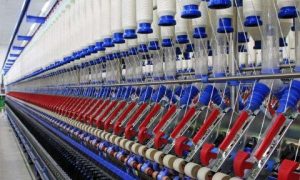
SINGAPORE: Singapore’s manufacturing output continued its decline in July, with demand down in most clusters apart from precision engineering, according to an Economic Development Board (EDB) media release on Wednesday (Aug 26).
Industrial production fell 8.4 per cent year-on-year in July, extending June’s revised 6.5 per cent decline. This is the third consecutive month of negative growth for industrial production.
Excluding biomedical manufacturing, output fell 5.2 per cent.
On a seasonally adjusted month-on-month basis, manufacturing output increased 1.6 per cent. Excluding biomedical manufacturing, output grew 10 per cent.
COVID-19 CONTINUES TO HIT OUTPUT
Transport engineering recorded the largest drop across all clusters at 39.8 per cent, with all segments recording a decline.
The aerospace segment remained weak as the volume of aircraft repair and maintenance work remained low amid the COVID-19 pandemic, said EDB.
The marine and offshore engineering segment shrank 58.7 per cent as movement restrictions at foreign worker dormitories continued to adversely impact the level of activities in shipyards, it added.
In the biomedical manufacturing cluster, output fell 24.8 per cent in July compared to the same period in 2019.This came as a surprise to analysts, who said that the normalisation of biomedical production momentum from its March and April highs, and potentially ballooning pharmaceutical stocks could have discouraged further production.
The medical technology and pharmaceutical segments declined 10.1 per cent and 30.5 per cent respectively, with the latter recording lower output in biological products and a different mix of active pharmaceuticals ingredients from a year ago.
UOB economist Barnabas Gan said in a report that the fall in biomedical production could be transient, owing to the likelihood of continued demand for biomedical products for the rest of the year.
Ms Selena Ling, head of treasury research and strategy at OCBC Bank, also said that while biomedical output may stay negative for a couple more months, there could be potential for the next leg up for Singapore – if the various ongoing COVID-19 vaccine trials are successfully developed and biomedical companies here participate in the uptick.
“Hence, it is premature to expect manufacturing output to sustain on-year contractions for the rest of the year, even though the biomedical pullback was to be anticipated as some of the global shortfall of medical supplies is easing with the reopening of economies worldwide,” she said.
Output for the electronics cluster also fell, declining 1.4 per cent year-on-year in July and reversing the 17.8 per cent growth in the previous month.
The other electronic modules and components and semiconductors segments grew 2.8 per cent and 0.3 per cent respectively, however the infocomms and consumer electronics and computers and data storage segments recorded declines of 15.6 per cent and 20.8 per cent respectively.
The chemicals cluster saw output fall 2.4 per cent in July compared to the same period last year. The petrochemicals segment grew 11.5 per cent, but the remaining segments saw declines.
The other chemicals segment fell 15.2 per cent while the specialties and petroleum segments contracted 16 per cent each, on the back of plant maintenance shutdowns and lower export orders amid the COVID-19 outbreak.
Meanwhile, general manufacturing output contracted 22.2 per cent in July year-on-year, will all segments recording declines.
The food, beverage and tobacco segment fell 9.8 per cent on account of lower production of milk powder and beverage products. The printing and miscellaneous industries segments declined 18.8 per cent and 38.7 per cent respectively, with the latter registering lower output of construction-related products.
PRECISION ENGINEERING CLUSTER SEES GROWTH
In contrast, the precision engineering cluster saw output increase 9.3 per cent in July compared to the same period a year ago.
The machinery and systems segment grew 20.4 per cent on account of higher production of semiconductor equipment.
However, the precision modules and components segment decreased 14.7 per cent with lower output in optical products and dies, moulds, tools, jigs and fixtures.
UOB’s Mr Gan said that going forward, risks arising from COVID-19 amid trade headwinds could be “formidable drags” to Singapore’s overall manufacturing environment.
Oil prices, which are expected to remain low at least until the end of 2020, is likely to inject further weakness in Singapore’s chemicals and transport engineering clusters, said Mr Gan.
“However, the bright-spot as seen in the support from the electronics cluster could persist especially given consumer demand for digital solutions,” he said.
“Other clusters such as the biomedical manufacturing may see further weakness in the next two months given the high base prints in the previous year, although the uptick in global demand for medical necessities may cushion the fall,” he added.
OCBC’s Ms Ling said the recovery trajectory for the manufacturing sector may not have been “waylaid” yet.
“After a good start to 2020, we saw a sharp stumble in the second quarter due to the COVID-19 pandemic, and an ongoing soft recovery in the third quarter, but the potential for the manufacturing recovery to pick up some speed in the fourth quarter is still there,” she said.

